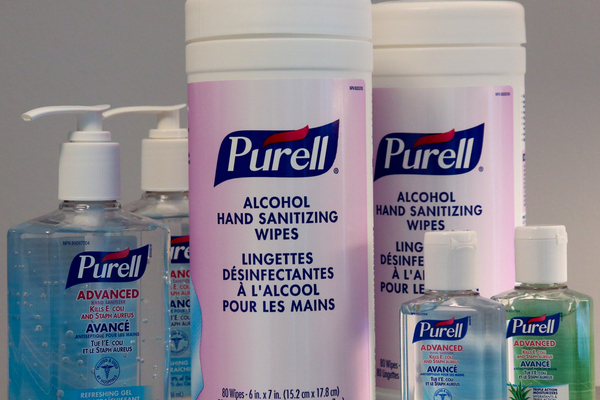If you’re not prepared to fork over big bucks for a small bottle of hand sanitizer, there’s another option beyond good old-fashioned hand-washing with soap and water. The Centers for Disease Control and Prevention says hand-washing with soap and water is the best way to clean your hands, but when that’s not an option, the agency recommends using an alcohol-based hand sanitizer with at least 60% alcohol.
Along with face masks and sanitizing wipes, alcohol-based sanitizing gel has been one of the most in-demand items as coronavirus fears have sparked panic buying that has left store shelves bare. That panic buying has brought complaints of price gouging, with a two-pack of Purell 12-ounce bottles selling for a marked-up $149.
Now, shoppers are going the do-it-yourself route and making batches of homemade hand sanitizer with items that most people have at home.
During a press briefing of the Coronavirus Task Force, CDC Director Robert Redfield advised the American public to vigorously wash hands with soap and water for 20 seconds. “If they want to use the hand sanitizers, that’s another option,” Redfield said. “But I don’t want people to think that it’s inferior to what we’ve recommended for decades.”
There are multiple recipes circulating about how to make your own sanitizer. One posted on ThoughtCo.com by chemistry expert Anne Marie Helmenstine, requires two ingredients: isopropyl alcohol (99% rubbing alcohol) and aloe vera gel. The ThoughtCo recipe calls for two-thirds of a cup of rubbing alcohol or ethanol and a third-cup of aloe vera gel. According to the reference site, essential oils can also be added to it.
Dr. David Agus, a professor of medicine and engineering at University of Southern California’s Keck School of Medicine, said it’s “definitely OK” and a “great idea” to make your own hand sanitizer. “The bottom line is most of these are 70% of alcohol or higher,” Agus said, adding there’s no magic number. “The virus isn’t going to say, ‘Hey, you’re 59% alcohol, therefore I’m going to be alive.’ As long as you’re in that range, I think you’re doing OK. This virus has what we call an ‘envelope’ on it, and the envelope is very sensitive to alcohol, which kills the virus.”
There are also widely circulated recipes using vodka as the main ingredient, including one posted on Good Housekeeping magazine’s website. Two biology professors from Benedictine University in Lisle, Illinois, say consumers should pay attention to the percentage of alcohol present when using vodka.
Tanya Crum, an assistant professor, and Jayashree Sarathy, an associate professor, told USA TODAY that the concentration of ethanol in 80 proof vodka is only 40% and is “not concentrated enough to kill viruses.” They suggest 180 proof spirits, which have 90% ethanol. Agus, who specializes in treating patients with advanced cancer, recommends making a recipe with isopropyl alcohol or ethanol alcohol over vodka. But if you have to use vodka, he also suggests 180 proof or a higher percentage of alcohol “have some benefit.”
According to the CDC, this is how to properly clean your hands…
…with an alcohol-based hand sanitizer:
- Put product on hands and rub hands together
- Cover all surfaces until hands feel dry
- This should take around 20 seconds
…with soap and water:
- Wet your hands with warm water. Use liquid soap if possible. Apply a nickel- or quarter-sized amount of soap to your hands.
- Rub your hands together until the soap forms a lather and then rub all over the top of your hands, in between your fingers and the area around and under the fingernails.
- Continue rubbing your hands for at least 15 seconds. Need a timer? Imagine singing the “Happy Birthday” song twice.
- Rinse your hands well under running water.
- Dry your hands using a paper towel if possible. Then use your paper towel to turn off the faucet and to open the door if needed.
—
Photo Credit: KC Melete / Shutterstock.com
